5-99 YEARS 2+ PLAYERS 10-15 MINUTES DONATELLA COLINA Remember the movement and have fun!
Remember the movement and have fun!
AGE: 5+
NUMBER OF PLAYERS:
2 to 8. It can also be played in teams. In this case, the team that first has all the members in the right colour and making the right move wins the card.

CONTENT OF THE GAME:
• 14 tokens


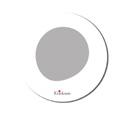

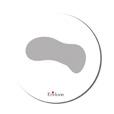
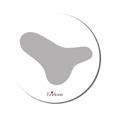











• 60 cards, divided into 3 difficulty levels
• 8 disks for the “around the table” version
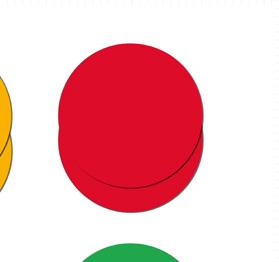
• 4 mats




COMPOSITION OF THE CARDS:

LE VEL 1
Illustrations:
FISH, PENCIL, PEAR, BALL
Difficulty 1: identifying simple figures in a range from 0 to 4

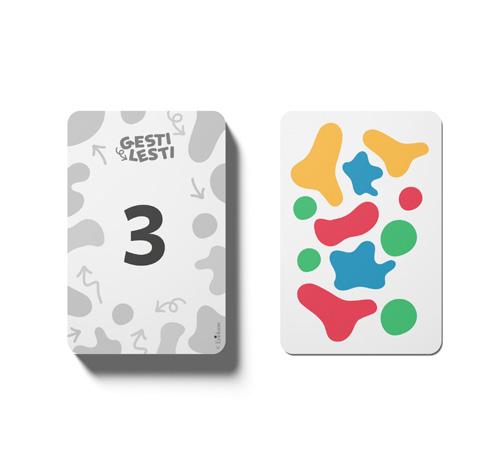
LE VEL 2
Illustrations:
HEART, FLOWER, FISH, BALL, APPLE
Difficulty 2: identifying overlapping figures/ outlines, in a range from 0 to 5
LE VEL 3
Illustrations:
5 TYPES OF SPOTS
Difficulty 3: identifying abstract figures in a range from 0 to 5
GOALS
Enhancement of Executive Functions, especially updating and shifting. The game promotes the ability to perform double tasks, self-regulate movement, recall tasks in working memory, increase the speed of information processing and the capacity for visual exploration. At the same time, the difficulty of the game can be calibrated to the child or to the group of children:
• by changing the level of the cards (simple pictures, simple pictures in a background figure task, elaborate spots).
• by changing the movement patterns/se quences depending on the executive and motor goals to be pursued.
The inserted motor, movement or sound targets are proposed within the fra mework of multiple tasks that, by acti


vating the executive system in a way that differs from the single exercise, creates the possibility of automating the targets themselves.
AIM OF THE GAME
Gaining the greatest number of cards.
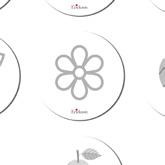
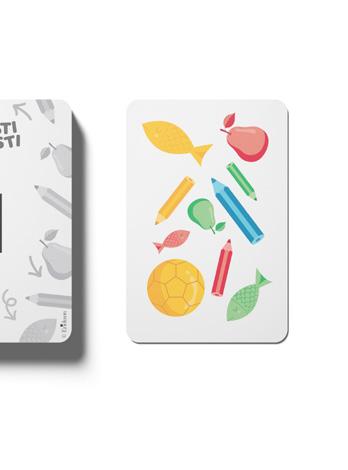
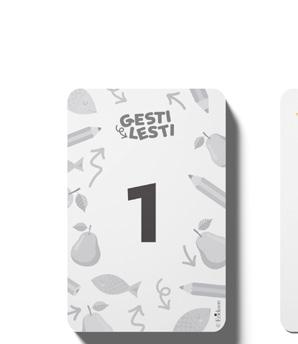


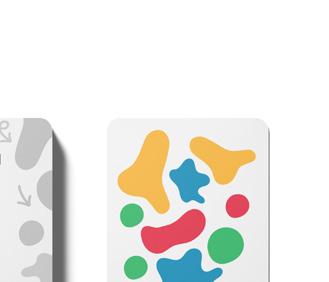

GAME SETTING
Place the 4 coloured mats on the ground, well spaced out, and choose which one of the three decks you wish to play with, according to the most suitable level of difficulty. Place the deck of cards on the table, with the numbers clearly visible. In order to facilitate the game, place tokens of the illustrations that match the selected deck on the table. Attribute a movement to be performed to each figure in the deck, such as for level 1:
• fish = jumping with feet together,
• pencil = twirling,
• pear = handclapping, ball = jumping on one foot.

Determine an action to be performed even in the case of a wild card, such as standing completely still, or counting to 10, or ta king 3 deep breaths.
To promote the memorisation (and the checking!) of the actions to be carried out, it is advisable to write down the list of gestures on a sheet of paper, attributing a token with an illustration to each one.

jumpingwith feettogether





twirling handclapping jumpingononefoot
UNFOLDING OF THE GAME
All players arrange themselves around the table so that the deck of cards is clearly visible. At the beginning, after memorising the number on the back of the first card in the deck, the game leader (or each player in turn) turns over the card and everyone carefully observes the represented figures.
Each player must identify, among the represented figures and colours, those matching the quantity that was on the back of the same card, previously memorised. The colour corresponds to the mat in whi-

ch to run on, the shape corresponds to the gesture to be performed. In this case, running in the green and hand clapping. The fastest player who performs the right gesture wins the card. The player who gets the highest number of cards wins.
Remember that:
• Only 1 colour and 1 shape are correct
• There is no chance to subsequently correct the choices that were made
In the example, the player must identify which figure is represented twice (the pear) and which colour (the blue)
NUMBER ZERO
When coming across the number zero, the player will have to figure out which figure and colour are missing on the card. In this case, he or she will have to run into the missing colour and perform the gesture that is attributed to the absent figure.

Example of a zero card: the blue colour and the fish shape are missing
THE WILD CARDS
In some cases, the number on the card does not correspond to the amount of figures and colours: this is the wild card and the player will have to carry out the previously established task.

In the wild card there is NO correspondence between the number on the back and the illustrations.
VARIATIONS TO INCREASE DIFFICULTY
• You can include the rule of performing as many gestures as the represented number. In the example above, running on the green and clapping hands twice.
• You can also add motor sequences that combine several movement patterns. This modality increases the load in the working memory.
• Eye-hand coordinations, such as with a ball, can be included. In this case, the player has to fetch the ball before running onto the mat. This modality requires inhibiting the reaction as well as enhancing manual skills with the ball.
SWIFT GESTURES... AROUND THE TABLE
If fine motor skills and control of sitting posture are to be preferred, coloured tokens can be used for the table version of the game and can be scattered on top of it (4 if the game is being played 1 to 1; 8 if the game is being played by several players). The game is played in a similar way: once the target colour has been identified, the player brings his or her hand close to the coloured reference tokens and performs established hand movement patterns (e.g. FISH = opposing index finger to thumb; PENCIL = opposing middle finger to thumb, PEAR = opposing ring finger to




thumb, BALL = opposing little finger to thumb).
In this modality it is also possible to request transitive gestures with communicative meaning (e.g. making the sign “ok”, “later”, “hello” etc.) instead of movement patterns.
An ‘expressive’ variant can also be added to the table version, if the tasks to be performed are at the level of facial praxis (FISH = closing the eyes, PIG = sticking out the tongue, PEAR = blowing, BALL = kissing).




 Example of a multi-player setting
Example of a multi-player setting
PHONOLOGICAL VERSION
Many thanks to speech therapist Dr. Luisa Olivieri for her contribution in the development of this game variation.
The game is played with the same mechanisms described above, but the gestures linked to the shapes are replaced with phonemes and words, chosen depending on the targets that are intended to be automated. Here are some examples:
• Voiceless and voiced phonemes targets: f v p b t d
• Anterior and posterior occlusive pho -
VARIATION WITH GRAPHEMES
Another use of this modality is the automation of graphemes. Players are provided with sheets and markers/pencils of the 4 colours on the paper. At the beginning of the game, they choose the graphemes they wish to work on, to be used with the same gesture dynamics already described in the previous modalities.
For example: fish = cups, pencil = arches, ball = towers, etc . If they already know how to write, this modality can also be used to automatise cursive ligatures within syllables.
n emes targets: t d k g
• Target words for vertical descent of the jaw: pappa, mamma, api, bimba, mani
• Target words for labiofacial curvature: buco, lupo, gufo, moto, muro
• Target words for anterior and posterior contraction of the tongue: letto, coda, dito, gatto, tetto
The children, once they have looked at the card, without being seen by each other, draw the target grapheme on the sheet and at this point, all the cards are uncovered. The winner is the one who has answered correctly.
For example, if the card asks for the 3 and the answer is 3 fishes and 3 red figures, the children have to draw the grapheme that corresponds to the shape of the fish using the red colour.
This game is suitable for being used in small group contexts and can be played in cooperative (or team) mode to promote brainstorming skills among participants before producing an answer.
Establish a game leader and a game time limit, to be monitored with a timer or an hourglass. The leader shows a card, and the other players must observe it carefully throughout the time marked by the timer or by the hourglass.
When the time is up, the leader hides the

card and asks questions, such as:
• “Do you remember how many red things there were”?
• “Do you remember what yellow objects there were?”
• “Do you remember how many fish there were?”
• “Can you tell me how many green pencils there were?”
Each correct answer is worth one point and the player (or the team) who reaches the score set at the beginning of the game wins.


TWO, THREE...
ONE,
QUIZ!
CREDITS
A game by Donatella Colina
Design and editing: Sara Lisa Di Mario
Graphics and layout: Leonardo Michelon
Art direction: Giordano Pacenza
Erickson© 2024
ISBN 978-88-590-3726-2
Edizioni Centro Studi Erickson
Via del Pioppeto 24 - 38121 TRENTO
Tel. 0461 951500
www.erickson.it - info@erickson.it


















































